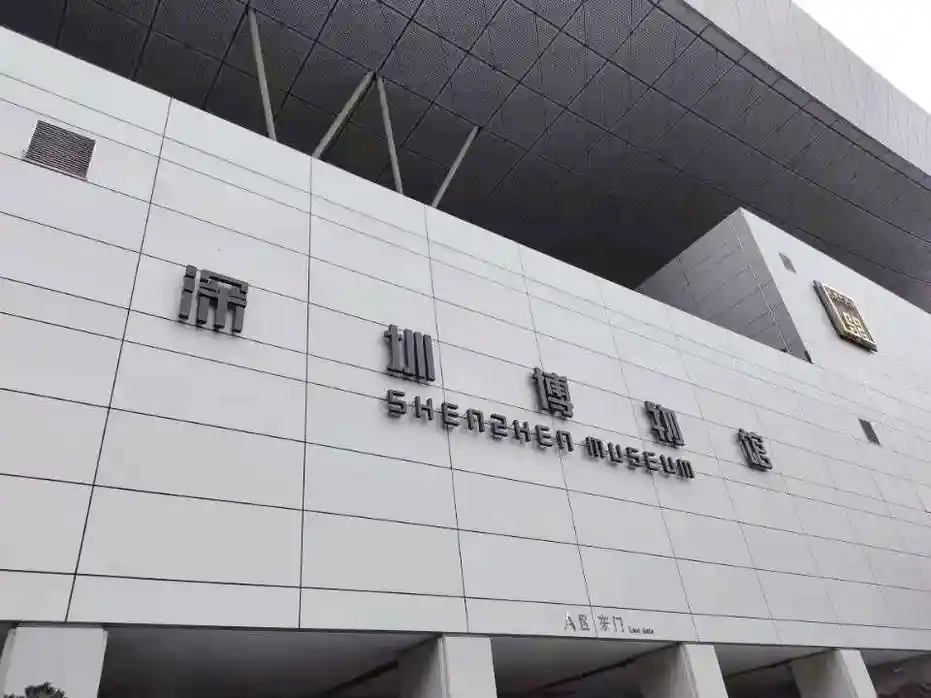Introduction: Uncovering the Legacy of a Mountain Stronghold
Nestled in the rugged terrain of northeastern China, Hulisanshan Fort stands as a silent witness to centuries of conflict, culture, and resilience. Though not as widely known as other ancient Chinese fortresses, its historical value is undeniable. This mountain fortress offers a unique window into regional defense strategies and imperial military planning during pivotal dynastic transitions.
For travelers, historians, and cultural explorers alike, Hulisanshan Fort represents more than just stone walls and watchtowers. It embodies the spirit of protection, innovation, and adaptation under pressure. The site blends natural geography with human ingenuity, making it a compelling destination for those interested in heritage and archaeology.
This article explores the history, architecture, and enduring significance of Hulisanshan Fort. We will examine its strategic role, construction methods, and how it fits within broader patterns of frontier defense in ancient China. By understanding this site, we gain deeper insight into how empires secured their borders and how local communities contributed to national security.
Whether you’re researching for academic purposes or planning a visit, this guide provides authoritative, well-structured information optimized for clarity and engagement. Let’s begin our journey through time and terrain.
The Origins of Hulisanshan Fort
Hulisanshan Fort dates back to the late Ming Dynasty, around the 16th century. It was built in response to increasing threats from northern tribes along China’s frontier. Located in Liaoning Province, the fortress occupied a high-elevation ridge that provided commanding views of surrounding valleys and trade routes.
Historical records suggest the fort was part of a larger network of defensive structures. These included beacon towers, garrisons, and walled villages designed to slow enemy advances. Unlike the Great Wall, which served as a continuous barrier, Hulisanshan Fort functioned as a tactical node—supporting communication and troop movement.
Archaeological surveys have uncovered foundation stones, weapon fragments, and inscribed tablets near the site. While much of the original structure has eroded over time, these findings confirm its military purpose and approximate construction period. Local folklore also references the fort, often linking it to legendary generals who defended the region.
The name “Hulisanshan” translates roughly to “Fox Mountain,” possibly due to the area’s wildlife or topographical resemblance to an animal’s den. Whether symbolic or literal, the name reflects how deeply nature influenced both naming and strategy in ancient warfare.
Strategic Location and Military Importance
One of the most striking features of Hulisanshan Fort is its location. Perched on a narrow mountain spine, it controlled access to key mountain passes used by traders and raiders alike. This positioning allowed defenders to monitor movement and respond quickly to threats.
Elevation played a critical role in the fort’s effectiveness. At over 600 meters above sea level, sentries could spot approaching forces from several kilometers away. Smoke signals from adjacent towers enabled rapid long-distance communication—a vital asset before modern technology.
The surrounding landscape added natural defenses. Steep cliffs on two sides reduced vulnerability to flanking attacks. Only one narrow path led directly to the main gate, which could be easily barricaded during sieges.
| Feature | Strategic Advantage |
|---|---|
| High elevation | Enhanced visibility and early warning |
| Natural cliffs | Reduced need for man-made barriers |
| Proximity to trade routes | Control over supplies and movement |
| Connection to signal network | Rapid coordination with nearby outposts |
These advantages made Hulisanshan Fort an essential component of regional security during turbulent periods.
Architectural Design and Construction Techniques
The builders of Hulisanshan Fort utilized locally available materials, primarily granite and slate. Walls were constructed using dry-stone masonry—meaning no mortar was used—which allowed flexibility and durability in harsh weather conditions.
Walls averaged 2.5 meters in height and 1.2 meters in thickness. Watchtowers were positioned at corners and along vulnerable stretches. Remnants show evidence of wooden battlements that once topped the stone base, offering cover for archers and scouts.
Inside the compound, foundations indicate separate areas for barracks, storage, and command functions. A small cistern suggests water was collected from rainfall, a necessity given the remote location. No permanent living quarters remain, implying the garrison may have rotated seasonally.
What sets this fort apart is its integration with the environment. Rather than flattening the hilltop, architects adapted the layout to the existing terrain. This minimized construction effort while maximizing defensive capability.
Cultural Significance Beyond Defense
While primarily a military installation, Hulisanshan Fort also held cultural importance. It symbolized imperial authority in border regions where central control was often challenged. Its presence reassured local populations and discouraged rebellion or banditry.
Over time, the fort became embedded in regional identity. Annual festivals and oral traditions kept its memory alive, even after it ceased active service. Some villagers believe spirits of fallen soldiers still guard the mountain—an idea that adds mystique but also underscores deep emotional ties.
In recent years, scholars have begun documenting folk stories linked to the site. These narratives provide valuable context about how ordinary people perceived state power and national defense in pre-modern times.
Hulisanshan Fort in Historical Context
To fully appreciate Hulisanshan Fort, it must be viewed within the wider framework of Ming Dynasty frontier policy. During the 1500s, northern incursions by Jurchen and Mongol groups intensified. In response, the Ming government invested heavily in border infrastructure.
Hulisanshan Fort was likely constructed under the supervision of regional military commissioners. These officials coordinated labor, logistics, and design across multiple sites. Records show conscripted peasants and soldiers worked together on such projects, often under difficult conditions.
Compared to major strongholds like Shanhai Pass, Hulisanshan Fort was smaller and less fortified. However, its value lay in numbers and connectivity. Dozens of similar forts formed a layered defense system, slowing invaders and buying time for reinforcements.
This decentralized model proved effective in delaying large-scale invasions, though it could not prevent eventual collapse when internal corruption weakened the dynasty.
Preservation Challenges and Archaeological Efforts
Today, Hulisanshan Fort faces significant preservation challenges. Exposure to wind, rain, and freeze-thaw cycles has accelerated erosion. Unauthorized climbing and souvenir hunting have further damaged fragile sections.
Local authorities have classified the site as a protected cultural relic, but funding for restoration remains limited. Conservationists advocate for low-impact stabilization—using traditional materials and techniques to prevent collapse without altering authenticity.
Recent archaeological digs have focused on mapping underground features using ground-penetrating radar. These non-invasive methods help identify buried walls and artifacts without disturbing the site.
Collaboration between universities, government agencies, and community groups is essential for long-term protection. Public education campaigns can also reduce unintentional harm caused by visitors.
Tourism Potential and Visitor Experience
Despite its remote location, Hulisanshan Fort attracts growing interest from eco-tourists and history enthusiasts. The hike to the summit takes about 45 minutes and offers panoramic views of forested hills and distant rivers.
On-site signage is minimal but improving. Some trails now include interpretive panels explaining key features. Guided tours—available in Mandarin and basic English—are offered on weekends during peak seasons.
Visitors should come prepared:
– Wear sturdy hiking shoes
– Bring water and sun protection
– Avoid touching exposed masonry
– Follow marked paths only
A visitor center is planned for future development, which would enhance accessibility and educational outreach.
Comparative Analysis with Other Mountain Forts
Hulisanshan Fort shares similarities with other mountain-based defenses across China. However, subtle differences highlight regional adaptations.
For example:
– **Jiayu Pass (Gansu):** Larger, better preserved, part of the Great Wall system
– **Pingxingguan Fortress (Shanxi):** Site of a famous WWII battle; more accessible
– **Hulisanshan Fort:** Smaller, less restored, emphasizes terrain integration
Each site reflects distinct geographic and historical pressures. Studying them together reveals how military engineering evolved in response to local needs.
Future Prospects and Research Opportunities
There is still much to learn about Hulisanshan Fort. Ongoing research could uncover new details about troop composition, supply chains, and daily life within the garrison. Digital reconstructions using 3D modeling are already helping visualize its original appearance.
Potential initiatives include:
– Expanding excavation with international teams
– Developing bilingual digital archives
– Creating virtual reality experiences for remote audiences
– Integrating the site into regional heritage tourism circuits
With proper investment, Hulisanshan Fort could become a model for sustainable cultural preservation in rural China.
Conclusion: Honoring a Forgotten Guardian
Hulisanshan Fort may not be the largest or most famous fortress in China, but its story is no less important. As a strategic outpost, cultural landmark, and architectural achievement, it deserves greater recognition.
Its ruins remind us of the sacrifices made to protect borders and maintain order. They also illustrate how humans adapt to challenging environments through innovation and cooperation.
For researchers, this site offers rich opportunities for discovery. For travelers, it promises adventure and reflection. And for future generations, it serves as a tangible link to the past.
We encourage responsible exploration, scholarly inquiry, and community involvement in preserving Hulisanshan Fort. By doing so, we ensure that this ancient mountain stronghold continues to inspire long after the echoes of war have faded.



